The Black Power movement of the 1960’s and ‘70’s was not spawned by a spontaneous determination to destroy white supremacism and undo the psychological damage of European enslavement, colonialism and Jim Crowism. Rather, it was a much longer and more complex historical process, a process which this column is dedicated to exploring.
Africans in the diaspora began to reject the racist prescriptions “negro” and “nigger” well before the Haitian Revolution. Among the first to do so were twelve Black British abolitionists who came together in 1786 and asserted their identity as the “Sons of Africa.”
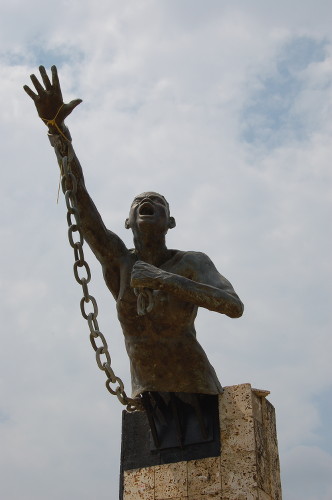
Bioho led a successful slave revolt in the 17th Century, making it the first free black town in the Americas, which maintained its African cultural tradition.
Two of most prominent among them published widely read works. First, Ottobah Cugoano’s publication in 1787 clearly identified Africa as his homeland and “nationality” (Narrative of the Enslavement of Ottobah Cugoano, A Native of Africa; published by himself, in the year 1787). Two years later, Olaudah Equiano also asserted his African identity when using his adopted European name, as seen in the title of his major abolitionist work, The Interesting Narrative of The Life of Olaudah Equiano or Gustava Vassa, the African.
Contemporary free blacks on the other side of the Atlantic not only identified as “African” but also established pan-African associations. These included the “Free African Society,” founded in Philadelphia by Richard Allen and Absalom Jones in 1787. That same year, Prince Hall established the Free African Lodge. In 1789, the “Union of Africans” was established in Newport, Connecticut. In 1816, Allen went on to put the “African” label on the African Methodist Episcopal (AME) church.
Psychiatrist Frances Cress Wesling argues, “…the major and only problem facing Black and all other non-white peoples throughout the world” is “the absence of any true power to determine ultimately what happens to their individual and collective lives” (The Isis Papers: The Keys to the Colors, 1991).
“True power” is a debatable construct. Nevertheless, during the 19th century the following events most dramatically demonstrated black power as a counterpoise to white power. At the beginning of the century, Haiti’s decisive defeat of the two mightiest state representatives of white power, France and Britain, earned the new nation its flagship status in black power in the hemisphere.
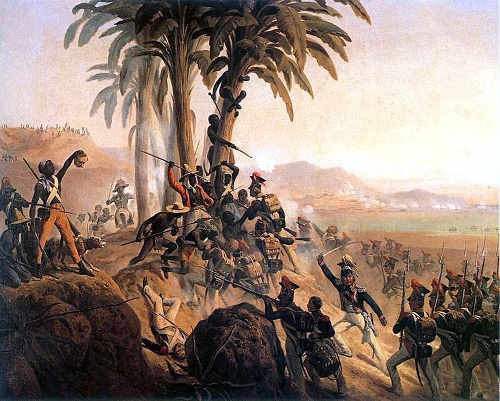
Towards the middle of the century, African American emigrants founded Liberia in West Africa, modelling its constitution more on Haiti than the USA. Another significant mid-century defining moment in black power was the critical role of black soldiers on both sides of the American Civil War.
In the late 1870s, another military demonstration of black power over white power was the Battle of Isandlwana in South Africa, in which the Zulu inflicted a crushing defeat on the British.
The final decade of the century ended as it began, with a stunning and humiliating defeat of white power in the Battle of Adwa, which preserved Ethiopia’s sovereignty against Italian imperialism.
These episodes convincingly demonstrated the military readiness and potential of Africans to secure black power within oceans of white power, thus exposing the vulnerability of white power. Not all episodes have received the attention they deserve and fewer feature in the historicising of Black Power. Space, however, restricts attention only to Haiti in this column.
Haiti was the first—but not the only—sovereign state to constitutionally enshrine “black” as the descriptor of national identity and citizenship—Liberia was the second (bbc.com/news/world-africa-43113979).
Under Article 14 of the Haitian Constitution of 1805, all citizens were to be known “sous la dénomination générique de Noirs” (“by the generic term, Black”). The preceding Article exempted all white women, white children, and naturalised Germans and Poles from the disabilities applied to whites in general. Taken literally, these white minorities were also “black.”
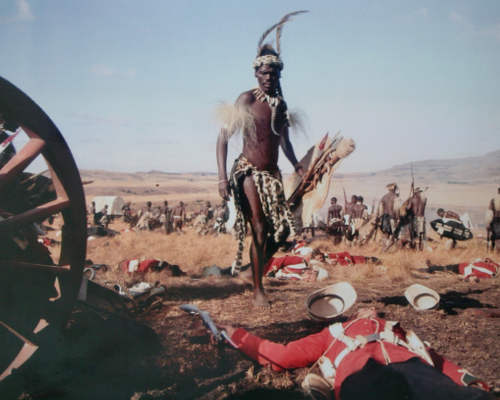
Although all were “black,” the constitution did not turn the prevailing supremacist power relations of “white over black” on its head; instead it decreed thus: “The citizens of Haiti are brothers at home; equality in the eyes of the law is uncontestably acknowledged” [Article 3].
Yet, long after the Revolution, Haiti continued to feel “the awesome and murderous reality of white supremacy” (Welsing, The Isis Papers). One of these awesome moments was the US invasion in 1915, which forced the abrogation of black only citizenship.
The restoration of black dignity through Black Power was the boldest project in African emancipation since the establishment of the Republic of Haiti. Historian Jacob Carruthers has conceived this project as “a battle to free the African mind” (Intellectual Warfare, 1999).
The historical reclamation of Ancient Egypt was the cornerstone of Africans’ intellectual challenge to supremacist historians who denied them any meaningful contribution to world civilization, and even to their own African civilizations. This process of redemption also had its foundation in the 19th Century.
Two emancipatory African American publications in 1829 are worthy of note. In his Ethiopian Manifesto, Alexander Young equated “the black African” with the “Ethiopian people.” His referent was not the racist anthropology of the day but the authority of the Christian Bible.
Young rejected the racist assertion that Africans owed whites for tutelage in civilisation; to him the foundation of “civil and religious rights” of “the black man or Ethiopians’ rights” was established on “the Ethiopian’s Rock,” implying divine authority.
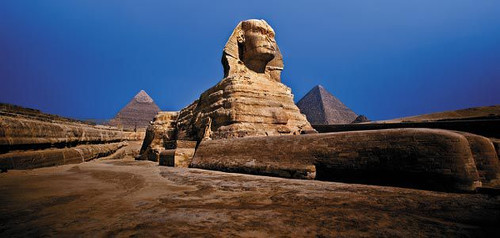
Taking his cue from French philosopher-historian, Count de Volney, African American abolitionist David Walker reclaimed Ancient Egyptian civilisation as an African heritage: to him, ancient Egyptians were black Africans, the “Sons of Africa or of Ham among whom learning originated, and was carried thence into Greece where it was improved upon and refined” (Walker’s Appeal, in Four Articles, 1829).
Caribbean intellectuals were not slow to reclaim their African heritage and redeem their black identity. Rejecting the racist view of Africa as “the dark continent,” Edward Wilmot Blyden affirmed African civilizations as the light of the ancient world: “To Africa kings and philosophers of antiquity also resorted, either to gaze upon its wonders or to gather inspiration from its arts and sciences or to consult the oracle of Jupiter, Ammon…”
Throughout the Americas, Emancipation Acts were strategic responses to maintain white power against the currents of technological, economic and commercial revolutions sweeping the 19th-century Atlantic world.
Although cheated of their promised 40-acres-and-a-mule compensation for enslavement during the era of Reconstruction, other African Americans had their first taste of “black power” under the 15th Amendment, which granted them the franchise.
By 1872, some 320 blacks were elected to State and Federal legislatures. Five years later, the Klu Klux Klan reawakened the fear of the black man as “a genetic enemy” (Wesling, The Isis Papers). Almost complete disempowerment followed in the wake of Jim Crow, driving Africans back to paid labour on the plantations and forced labour in the emerging prison industrial complex.
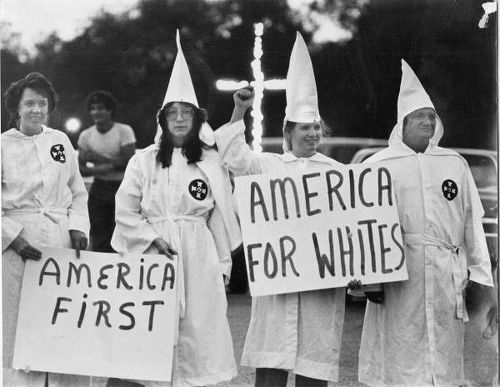
(Copyright Mark Foley/AP)
Emancipation in the Anglophone Caribbean saw a more vicious assault on black freedom and cultural regeneration than the USA. Land control and indentured immigration combined with comprehensive racist legislation backed by racist police and judicial structures ensured the near absolute disempowerment of the African masses.
Although not directed at the Anglophone Caribbean, the observation of French writer Jean de la Fontaine in 1678 explicitly outlines the dialectic of “white” over “black” in determining innocent or guilt, acquittal or conviction—in other words, absolute power over absolute misery: “Selon que vous serez puissant ou misérable, les jugements de cour vous rendront blanc ou noir” (Depending on whether you will be seen as powerful or powerless, the Courts’ judgements will make you black or white”—Centre National de Resources Textuelles et Lexicales).
In a real sense, Garveyism was the first “black power” movement in the 20th Century. Recognising the white-power structure of the USA as the foundation of the country’s global financial power, Marcus Garvey concluded: “Hence, it is advisable for the Negro to get power of every kind. POWER is education, science, industry, politics and higher government” (The Philosophy and Opinions of Marcus Garvey, 1986).
Garvey also emphasised, “Organisation is power.” His “race first” slogan was not reverse racism but his consciousness of “blackness as an organising principle” against racism (Liz Mackie, The Great Marcus Garvey, 1987; Tony Martin, Race First, 1976).
The term “black power” was coined by African American writer Richard Wright in 1954, but the great Trinidadian pan-Africanist George Padmore also deserves a share of the credit. It was Padmore who persuaded Wright to visit Africa and to publish his experience.
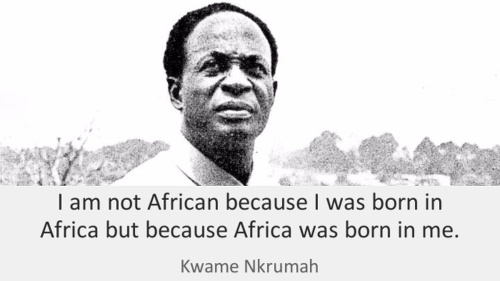
Wright was inspired by Ghana (then the Gold Coast) under its first black government, led by Kwame Nkrumah (Richard Wright, Black Power: A Record of Reactions in a Land of Pathos, 1954).
One decade later, Trinidadian Stokely Carmichael/Kwame Ture radicalised the Civil Rights Movement in the USA by converting “black power” into a militant slogan of black nationalism and black regeneration. An inevitable outcome of black power was the emergence of black militarism, iconized in the Black Panther Party of which Ture was also an early member.
In England, the black power movement can be traced back to the mobilisation of community leaders in the 1950s. One of the most prominent among them was Trinidad journalist Claudia Jones, who arrived in London in 1955. Before she passed away in 1964, Jones had established the era of black mass protests for justice against institutionalised racism. Her newspaper, The West Indian Gazette, “became a key contributor to the rise of consciousness within the Black British Community” [Wikipedia].
Together with other leading anti-racist organisations, the Inter-Racial Friendship Co-ordinating Council that she founded in 1959 was significant in putting the black British struggle for equality “…within an ongoing international dialogue on race, citizenship and human rights…” (Kennetta Perry, Black Britons, Citizenship and the Politics of Race, 2015).
Black Power as a formal movement in Britain crystallised with the arrival of its chief missionary, Stokely Carmichael, in 1967. Ture labelled the British system of domination as “white power,” against which he called for the mobilisation of “black power.”
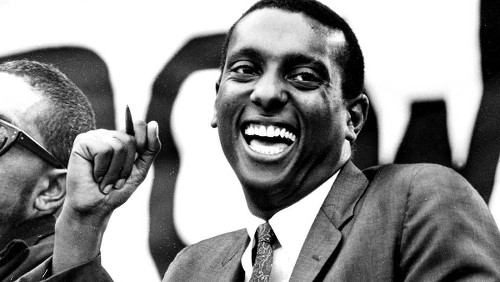
Late eminent Trinidad Express journalist Raoul Pantin described Ture’s public lecture at London’s Hyde Park as a “blood-and-thunder speech.”
Pantin contends that Ture opened the eyes of “black youths around the world” to a consciousness of what was missing in their newly independent nations: “Black Power. Not only as anger, not only as racial revenge, not only as extremist revolutionary action. But Black Power stood for dignity, for pride, for the rejection of 500 years of European superiority. Black is beautiful. That too, a rejection of centuries of cultural denigration, was the essence of Black Power” (Trinidad Express, June, 1996).
The BBPM was decentralised through a plethora of black organisations, the main being the British Black Panthers, launched in 1968 by Nigeria-born Obi Egbuna and Trinidadian Darcus Howe, among other civil rights leaders. Shortly after the launch, police detention of Egbuna saw Trinidadian Althea Jones take over leadership of the BPP.
Despite an early victory in the passage of the Race Relations Act of 1965, Black Power faced an uphill battle with the hardening of anti-black government strategies and several riots into the 1980’s. Well before that time, however, the movement had won the war of the mind and moved relentlessly to end the last vestiges of racism.
Under the leadership of Geddes Granger/Makandal Daaga, T&T became the apex of the Caribbean Black Power movement. Although derailed by a state of emergency and mass detentions, the movement succeeded in ushering in a new era of dignity and respect for Africa, African/black identity and African culture and religions while diminishing the racist wall of white privilege across most sectors of society.
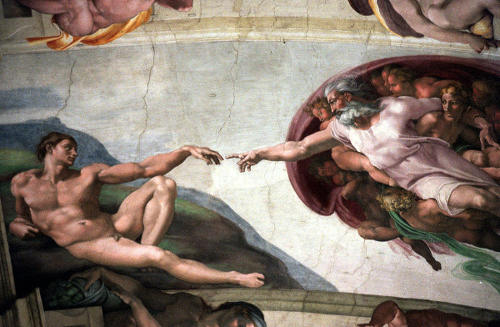
All aspects of white power—including aesthetics, morality and eschatology (final destiny)—were reinforced by caucasianised Christianity. This branding is rooted in the Renaissance paintings of Michelangelo in the Sistine Chapel of the Vatican, where the entire Christian cosmos, from Jehovah to the Saints of Catholicism, was modelled on contemporary white Italians. European imperialists took these white images around the world as the principal weapon of mind control of colonised peoples.
In the Caribbean, more than any other theatre of Black Power, the redemption of African/black identity centred on rescuing the mind from the stranglehold of white iconography and other whitened cosmological constructs. Thus, advocates of Caribbean Black Power integrated Yoruba Ifa (Orisha), Spiritual Baptism and Rastafarianism into the mainstream of the struggle. They rediscovered the “Black Madonna and Child” and celebrated “God, the Mother.” Indeed, without the restoration of African cosmogony and spirituality, the African/black identity could never be fully redeemed from the negative stereotypes functional to white supremacism.
Steve Bantu Biko was the Kwame Ture of South Africa. Biko embraced the Black Power movement under the banner of Black Consciousness, a student movement that culminated in the nationwide protests of 1976 that defeated the Apartheid regime’s plan of enforcing Afrikaans as the sole language of instruction. Black Consciousness was powered by the slogan, “Amandla! Awetu!” (“Power! To the People!”) as call and response, with the iconic Black Power clenched fist punching the air.
Historian Roger Beck writes, “The Black Consciousness movement was open to ‘Blacks’ (defined as all those who faced White discrimination) and included Coloureds, Indians, and Africans” (The History of South Africa, 2000).

Beck further explains, “Black Consciousness philosophy emphasized Black self-esteem, self-assertion, and psychological emancipation from generations of being made to feel inferior to Whites and to view oppression, misery, and poverty as inevitable.”
Biko was unequivocal that “black” was an ideological-redemptive construct, not a melanin descriptor. Not all coloureds, Indians and Africans were “Black” or “non-white.” As Biko explains in the book, I Write What I Like (1978): “Being black is not a matter of pigmentation—being black is a reflection of a mental attitude.”
More specifically, Biko declared, “…the fact we are all not white does not necessarily mean that we are all black… If one’s aspiration is whiteness but his pigmentation makes attainment of this impossible, then that person is a non-white. Any man who calls a white man “Baas” [Boss/Massa], any man who serves in the police force or Security Branch is ipso facto a non-white.” On the other hand, “Black people—real black people—are those who can manage to hold their heads in defiance rather than willingly surrender their souls to the white man.”
In explaining the complexity of Biko’s court trial for terrorism, the Editor of I Write What I Like concludes, “…what was on trial was the Black Consciousness movement itself.” In this regard, Judge Boshoff himself led the prosecution of black identity. The following exchange between Boshoff and Biko is self-explanatory:
Boshoff to Biko: “But now, why do you refer to your people as blacks? Why not brown people? I mean you people are more brown than black.”
Biko to Boshoff: “In the same way as I think white people are more pink and yellow than white.”
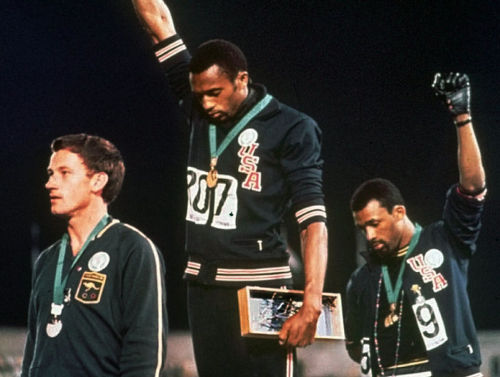
(Copyright AP)
In responding to Boshoff’s persistence that a “brown” identity would eliminate the distress that Africans experience in the received association of black with evil, Biko explained, “…because no matter whether we choose to be called brown, you are still going to get reference to blacks in an inferior sense in literature and in speeches by white racists or white persons in our society.”
To Biko, the key to the pursuit of Black Consciousness was in “challenging the very roots of the Black man’s belief about himself. When you say ‘black is beautiful’ what in fact you are saying to him is: man, you are ok as you are.”
Indeed, that was the message everywhere that Black Power took root. The triumph of that message was immortalised in the mantric T&T calypso, “Black is Beautiful” (1968) by the Mighty Duke.
I think a few lines of the song chosen at random constitute an appropriate conclusion to this series: “Black is beautiful/Say it out loud/Say ‘I’m black and proud’/[…] I say without regrets/No more inferiority complex.”
Claudius Fergus is a retired Senior Lecturer in the Department of History at UWI’s St Augustine Campus who specialises in the abolition of British colonial slavery and its transatlantic slave trade.
His major work on the subject is Revolutionary Emancipation: Slavery and Abolitionism in the British West Indies (2013). He has other extensive publications in peer-reviewed journals and edited books.
 Wired868 Wired868 for smart sport news and opinion
Wired868 Wired868 for smart sport news and opinion



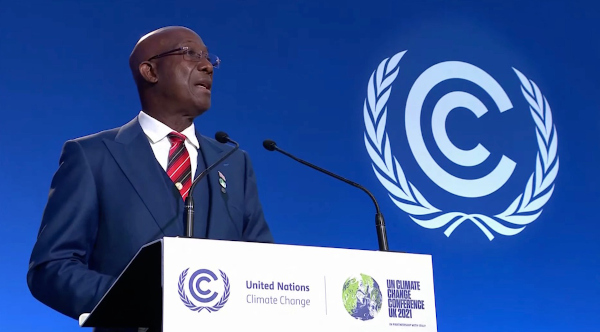

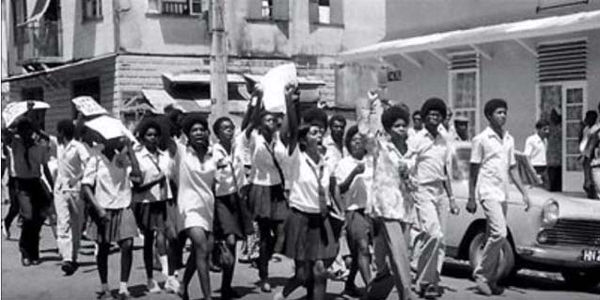

Very interesting article and the sources used are also very strong. One thing that baffles me though, is the statement Olaudah Equiano also asserted his African identity when using his adopted European name, as seen in the title of his major abolitionist work, The Interesting Narrative of The Life of Olaudah Equiano or Gustava Vassa, the African.” Don’t quite understand how the acceptance of his European name shows his acceptance of such identity. I would have thought the opposite.
Akins Vidale has a very good insight on matters like this
He does indeed.
Are we really looking for redemption of the psyche from Marvel comic books? Where people burst into Hulks when angry, run into phone booths to change clothes..What happens now there are cell phones Superman? Or follow big sledge hammers instead of taking the bus/Uber?, All these fellow wear their ‘jockey shorts’ on the outside or dress up like bats and drive 1940 model cars..I thought this just was a movie just like Shaft was a Black version of Mike Hammer or Mickey Spillane…What this about this movie somehow being an world wide catharsis for healing the black psyche? We have had Fanon since 1961 doing that in Wretched of the Earth’/Black skins white masks..P.S..anyone bitten by a Spider/spider lately? Will you be going rock climbing out C3 mall in Cocyea of the highway?